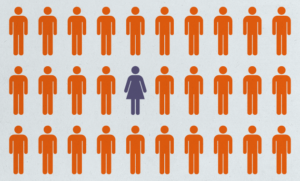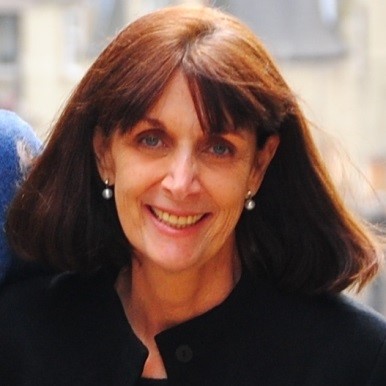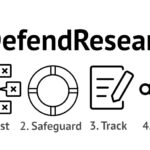By Lilian Nassi-Calò

Image: Nature.
The International Women’s Day, celebrated on March 8 since 1975, this year witnessed the publication of Elsevier’s “Gender in the Global Research Landscape”1. The study investigated publications and citations in the Scopus database in 27 knowledge areas of 12 countries and compared the gender distribution in the authorship of scientific papers in the periods 1996-2000 and 2011-2015. The good news is that the number of women who participated as authors on these publications significantly increased worldwide in the second period as compared to the first one, although the increments were uneven. Moreover, even though women continue to publish fewer articles in absolute numbers worldwide, citation rates indicate that their work is scientifically as important as the publications of their male colleagues.
Researchers in Brazil and Portugal are the ones closest to gender equity in terms of publication: 49% of the articles in these countries have the participation of female authors. Next come Australia, with 44% and the European Union with 41%. The report considers gender equity when women reach between 40-60% of contributions. Thus, several countries reached this mark in the period 2011-2015: the United States, United Kingdom, Canada, France and Denmark, in addition to those already mentioned.
Despite advances in increasing women’s participation in all research fields, however, gender equity is far from a reality in science. For example, the low number of women who appear as the first author in the literature reflects the disparities that still dominate the global science scene. Men still strongly dominate patenting, and in this field, women’s progress is slower than the growth of their share in article publishing. There are also fewer women in areas such as physics and engineering, while biomedicine concentrates more female researchers. Women also have less participation in the publication of articles resulting from international collaboration, according to the Elsevier report.
To further analyze the reasons for these disparities, a detailed study2 was carried out by researchers at the Max Plank Institute and the Bernstein Center for Computational Neuroscience, both in Göttingen, Germany. The results point out that there are significant gender disparities in the editing and peer review stages of scientific publishing, in addition to authorship, regardless of geographic region or area of knowledge.
The authors conducted a survey with about 41,000 articles published between 2007 and 2015 in 142 journals from the open access publisher Frontiers. The collection, which includes titles in the fields of science, health sciences, engineering, humanities and social sciences, was chosen for making available the names of more than 9,000 editors and 43,000 reviewers since the publication of the first issues in 2007. This detailed database allowed the authors to analyze the gender relations and the contribution of men and women in the attribution of authorship, editing and peer review.
The analysis revealed that the contribution of women in authorship, peer review and editing of articles published by Frontiers journals was 37%, 28% and 26%, respectively. The influence of area of knowledge in the contribution of female authors in the articles varies between 15% (Neurorobótica) and 50% (Public Health); regarding peer evaluation, this contribution varies between 15% (Surgery) and 50% (Public Health) and as for the contribution of female editors, it is between 5% (Robotics) and 35% (Neuroscience of Aging).
The authors of the study say that it is possible to observe globally a trend of gender balance over time, but this is a very slow progress. By means of linear extrapolation between the data of 2012 and 2015, it is possible to estimate that the gender balance in authorship would theoretically be reached in 2027; in peer review in 2034; and only in 2042 the gender parity in the editor role would be achieved.
Based on the results obtained, the authors claim that women contribute to a lesser extent to the articles editing system than it would be expected by simple numerical under-representation of women in the position of editor or reviewer. This fact, according to the authors, represents clear evidence of homophilic behavior, in which editors of the masculine gender choose male analysts. Apparently, homophilic behavior is observed only in a few female publishers; the most common are female editors indiscriminately choosing reviewers of both genres, based solely on their knowledge of the subject of the article to be evaluated. When the authors removed these editors from the data sets, the editors’ preferences for female reviewers disappeared.
One of the limitations of the study pointed out by Marcia Mc Nutt, president of the U.S. National Academy of Sciences, in a Nature’s note3 on the paper by Helmer, et al., questions the fact that the study indicates only to the number and men and women who actually acted as the papers’ referees and not those who were asked to review them. McNutt cites in this context an earlier study4 which indicates that female researchers tend to decline more often to peer review papers than their male counterparts.
The preferences of male editors for same gender reviewers are explained by Helmer and his collaborators taking the example of the construction of social networks, or the supposed tendency of the human being to associate with people of qualities similar to his own. In the case of female editors, their choice for reviewers of their gender can be explained by an attempt to make their area more balanced, just as female researchers tend to preferentially mentor female students.
According to Helmer, et al., There is a long way to go to achieve gender equality in the positions of editor, reviewer and author. “Yet, with the joint effort of the scientific community […], a merit based system with equal opportunities for all scientists might just be within reach. After all, which social enterprise would be more apt to follow ratio over instinct than science?”
Notes
1. Gender in the Global Research Landscape [online]. Elsevier. 2017 [viewed 26 March 2017]. Available from: https://www.elsevier.com/__data/assets/pdf_file/0008/265661/ElsevierGenderReport_final_for-web.pdf
2. HELMER, M., et al. Gender bias in scholarly peer review. eLife [online]. 2017, 6, e21718 [viewed 26 March 2017]. DOI: 10.7554/eLife.21718.001. Available from: http://elifesciences.org/content/6/e21718/
3. ROSS, E. Gender bias distorts peer review across fields. Nature [online]. 2017 [viewed 26 March 2017]. DOI: 10.1038/nature.2017.21685. Available from: http://www.nature.com/news/gender-bias-distorts-peer-review-across-fields-1.21685?WT.ec_id=NEWSDAILY-20170321%20
4. LERBACK, J. and HANSON, B. Journals invite too few women to referee. Nature [online]. 2017, vol. 541, pp. 455-457 [viewed 26 March 2017]. DOI: 10.1038/541455a. Available from: http://www.nature.com/news/journals-invite-too-few-women-to-referee-1.21337
References
Gender in the Global Research Landscape [online]. Elsevier. 2017 [viewed 26 March 2017]. Available from: https://www.elsevier.com/__data/assets/pdf_file/0008/265661/ElsevierGenderReport_final_for-web.pdf
HELMER, M., et al. Gender bias in scholarly peer review. eLife [online]. 2017, 6, e21718 [viewed 26 March 2017]. DOI: 10.7554/eLife.21718.001. Available from: http://elifesciences.org/content/6/e21718/
LERBACK, J. and HANSON, B. Journals invite too few women to referee. Nature [online]. 2017, vol. 541, pp. 455-457 [viewed 26 March 2017]. DOI: 10.1038/541455a. Available from: http://www.nature.com/news/journals-invite-too-few-women-to-referee-1.21337
ROSS, E. Gender bias distorts peer review across fields. Nature [online]. 2017 [viewed 26 March 2017]. DOI: 10.1038/nature.2017.21685. Available from: http://www.nature.com/news/gender-bias-distorts-peer-review-across-fields-1.21685?WT.ec_id=NEWSDAILY-20170321%20
External link
Frontiers – <http://home.frontiersin.org/>
 About Lilian Nassi-Calò
About Lilian Nassi-Calò
Lilian Nassi-Calò studied chemistry at Instituto de Química – USP, holds a doctorate in Biochemistry by the same institution and a post-doctorate as an Alexander von Humboldt fellow in Wuerzburg, Germany. After her studies, she was a professor and researcher at IQ-USP. She also worked as an industrial chemist and presently she is Coordinator of Scientific Communication at BIREME/PAHO/WHO and a collaborator of SciELO.
Translated from the original in Portuguese by Lilian Nassi-Calò.
Como citar este post [ISO 690/2010]:

















Recent Comments